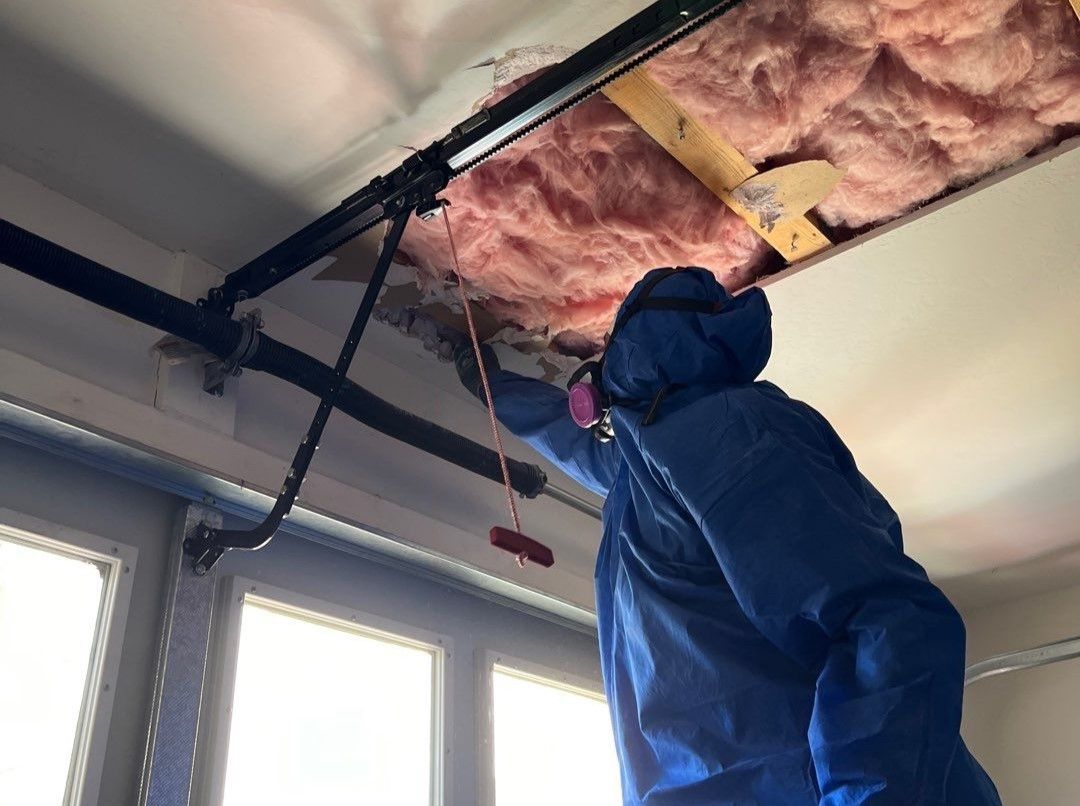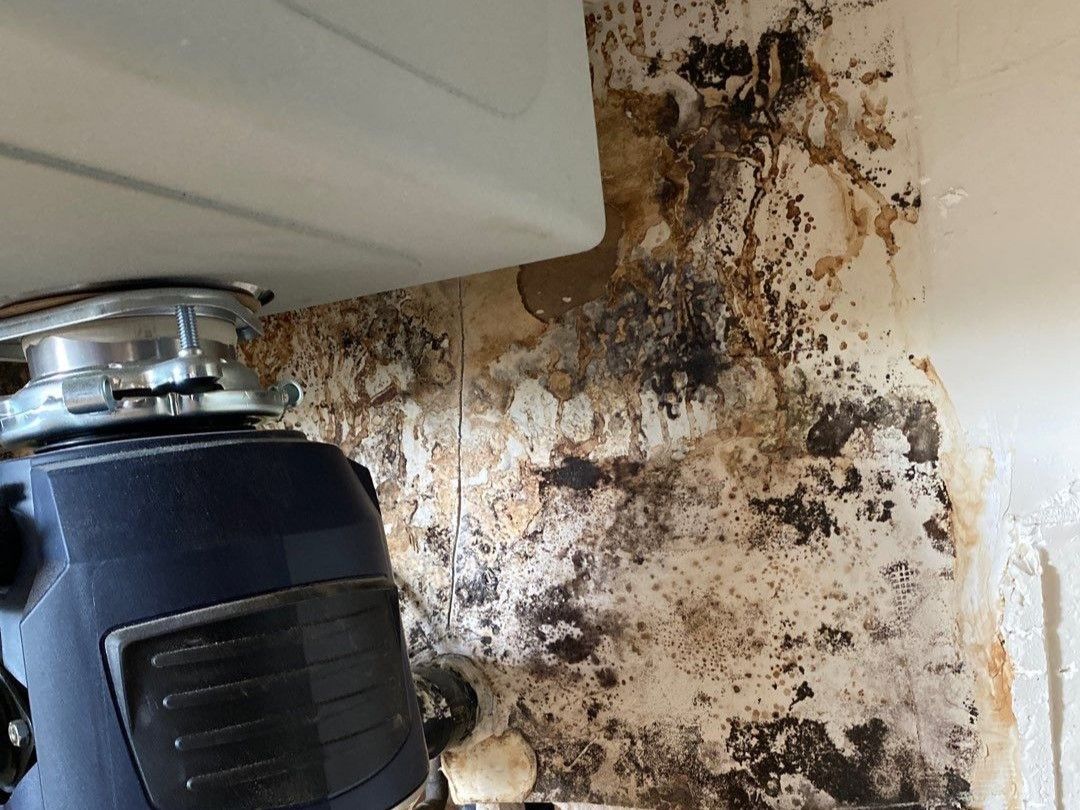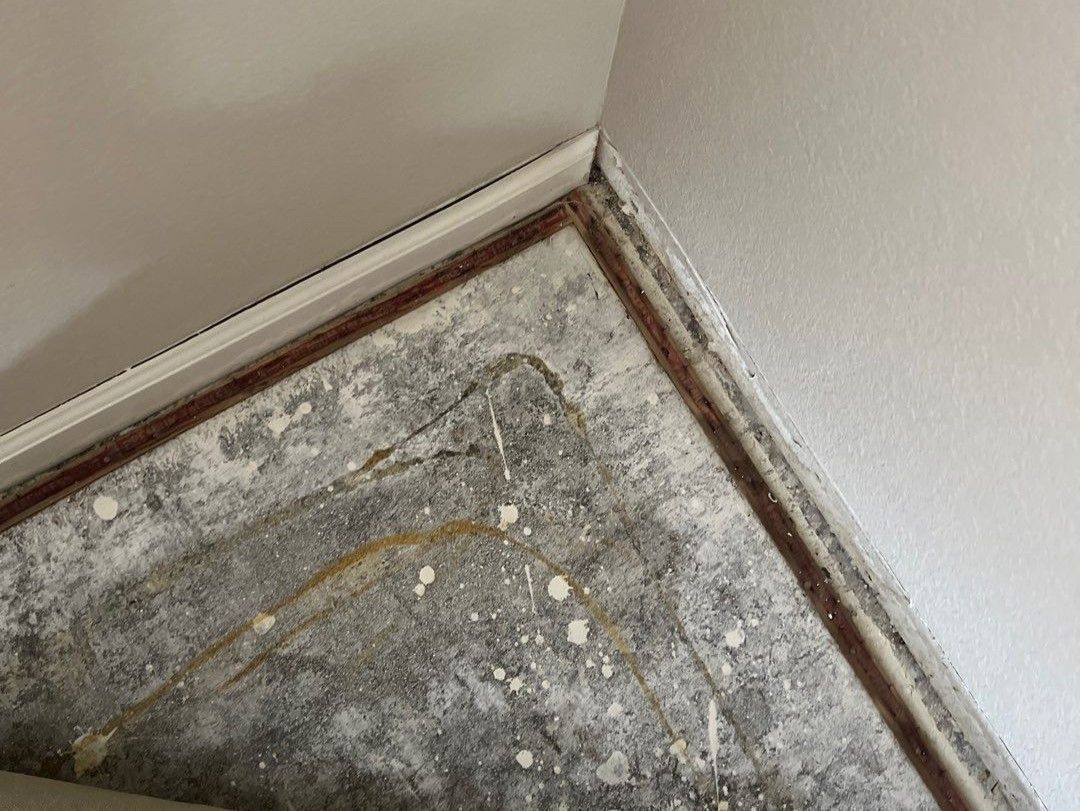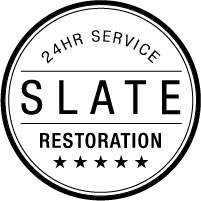What is Mold Remediation Anyway?

Mold remediation is the process of removing mold from a structure and treating the affected areas to ensure it doesn't make a comeback. This goes beyond simple mold removal, although physical removal of the affected materials is a part of the process.
You might be surprised by how elaborate the mold remediation process really is. At Slate Restoration, we take your home's cleanliness seriously and follow a strict process for treating and removing mold. Keep reading to learn about the steps our professionals take to get rid of mold in your home.
The Need for a Mold Remediation Service
Mold is a common occurrence that can be found almost anywhere, both within indoor environments and in the great outdoors. It particularly thrives in environments that are moist and damp, making areas with water damage or high humidity prime locations for active mold. It can easily grow on a variety of surfaces, including wood, drywall, and fabric, due to its ability to digest organic material.
The health implications of mold exposure are significant and can affect individuals differently based on their sensitivity and overall health condition. People with allergies may experience symptoms such as sneezing, runny nose, red eyes, and skin rash when exposed to mold. Those with asthma or other respiratory conditions might find their symptoms exacerbated, leading to difficulty breathing, coughing, or wheezing.
Even individuals without known allergies or respiratory problems can encounter irritation of the eyes, skin, nose, throat, and lungs due to prolonged mold exposure. It is crucial, therefore, to address mold issues promptly to safeguard the health and well-being of occupants within an affected structure.
The Mold Remediation Process
Mold remediation is a complex process that requires specialized knowledge, equipment, and training. As explained above, coming into close contact with a high quantity of mold can seriously harm your health. That's why a Slate Restoration mold remediation specialist uses personal protective equipment from the start and makes sure to treat all infected areas so that your home is left clean and protected.
Initial Assessment and Testing
To effectively address mold infestations, it is crucial to begin with a comprehensive mold inspection. Our certified professionals will conduct a visual inspection of the affected area, looking for visible mold growth and any signs of water damage or excess moisture. In some cases, air quality testing may also be conducted to identify the type and concentration of mold spores present in the environment.
While there may be some mold easily visible, it is likely that there is more than meets the eye. Mold can easily grow and hide behind materials like drywall or under carpets. This is why a keen inspection is necessary to find ALL of the mold.
Containment Procedures
Containment procedures play a vital role in halting the spread of mold spores during the remediation process. This crucial step typically involves meticulously sealing off the affected area with plastic sheeting and tape to create a barrier. In addition, the use of negative air pressure machines is employed to ensure that any spores released during the cleanup are funneled outside, rather than being allowed to disperse into other areas of the building or structure. Establishing this controlled environment is essential to prevent cross-contamination and ensure the mold is effectively and safely removed.
Air Filtration and Removal
By employing advanced HEPA filters, the air within the designated containment zone undergoes continuous filtration to capture any lingering mold spores effectively. This detail-oriented process plays a crucial role in halting the spread of spores, thereby safeguarding the air quality and ensuring it remains safe and healthy for both workers involved in the cleanup process and occupants in adjacent areas. Utilizing these specialized filters is a critical step in maintaining a clean and safe environment during and after the mold remediation process.
Removing Mold and Mold-Infested Materials
The physical removal of mold and mold-infested materials is a delicate process that requires specialized equipment and techniques. Certified professionals from a mold remediation company will use various methods such as damp wiping, scrubbing, or sanding to remove visible surface mold from contaminated areas. In cases where the mold has penetrated porous materials such as drywall or fabric, these materials may need to be completely removed and disposed of to ensure that all traces of mold are eliminated.
Cleaning and Sanitizing
Once all visible mold has been removed, the affected area is thoroughly cleaned and sanitized using specialized antimicrobial treatments. These treatments play a crucial role in preventing future mold growth by killing any remaining spores and inhibiting their ability to reproduce. This step also helps to eliminate musty odors associated with mold infestations.
Restoration
After the mold has been successfully removed and the affected area cleaned and sanitized, restoration work can begin. This may involve repairing or replacing any damaged materials, such as drywall, insulation, or carpeting.
While it may be difficult to watch damaged pieces of your home carted away, Slate Restoration is dedicated to restoring your home back to its original state.
Final Inspection and Testing
Upon completion of the mold remediation and restoration process, a final inspection and testing phase is essential to ensure the success of the remediation efforts. Certified mold remediation specialists will conduct an examination of the previously contaminated areas to verify that all mold and mold-infested materials have been successfully removed.
Air quality testing is often repeated at this stage to assert that the concentration of mold spores in the indoor environment has been significantly reduced to safe levels. This final step is crucial for certifying the health and safety of the indoor environment, giving peace of mind to property owners and occupants that the mold issue has been effectively resolved and that the indoor air quality meets or exceeds health and safety standards.

Prevention is Key
While addressing existing mold issues is crucial, preventing future occurrences is equally important. This involves identifying and addressing any sources of moisture that may be present in a structure. Regular maintenance such as checking for leaks, proper ventilation, and promptly addressing water damage can go a long way in preventing mold growth. In addition, keeping indoor humidity levels below 50% can also help prevent mold from thriving.
When to Call a Mold Remediation Expert
Mold remediation is not a DIY project. It requires specialized knowledge, equipment, and training to effectively and safely remove mold from an affected structure. In addition, mold infestations can pose significant health risks if not handled properly. Therefore, it is essential to call a certified mold remediation professional for any suspected or visible mold growth. They have the expertise and experience to conduct a thorough assessment, contain the affected areas, and safely remove all traces of mold.
So, even if you detect only a small amount of mold, it is always best to call in a certified mold remediation company to assess the situation and provide appropriate remediation measures. Remember, even a small amount of mold can quickly spread and cause significant damage if not handled promptly.
Additionally, they can help identify and address any underlying issues to prevent future occurrences. It is always better to be safe than sorry when it comes to mold remediation. So, if you suspect or detect mold in your property, don't hesitate to give us a call for immediate assistance. By taking prompt and proper action, you can ensure a safe and healthy indoor environment for yourself and others.
Health Risks Associated with DIY Mold Removal
Attempting to remove mold yourself without proper training and equipment can pose significant health risks. Mold spores are microscopic and can easily become airborne during the removal process, leading to potential inhalation and skin exposure. Exposure to mold can cause various health issues, including allergic reactions, respiratory problems, and even infections in some cases. This is why it is crucial to call in a mold remediation company who has the necessary training, experience, and protective gear to handle it safely. Your health and safety should always be a top priority when dealing with mold.
Preventing Future Mold Growth
As mentioned earlier, prevention is key in keeping mold at bay. In addition to addressing any sources of moisture and maintaining proper ventilation, there are other steps you can take to prevent future mold growth:
- Regularly inspect and maintain HVAC systems: Mold can easily grow in ductwork and vents if not properly maintained. Regular cleaning and maintenance of HVAC systems can help prevent mold growth.
- Use mold-resistant products: When renovating or building, consider using mold-resistant materials such as drywall, paint, and insulation. These can help prevent mold growth in the future.
- Control indoor humidity levels: Keeping indoor humidity levels between 30% to 50% can greatly reduce the risk of mold growth. Using dehumidifiers and proper ventilation in high humidity areas can help control moisture levels.
- Address water damage promptly: Any leaks or water damage should be addressed immediately to prevent mold growth. Quick action can also help mitigate potential structural damage and save you from costly repairs in the future.
By following these preventative measures, you can greatly reduce the risk of mold growth in your property. Remember, prevention is key in keeping mold at bay. So, be proactive and take the necessary steps to protect your property and health from mold infestations. The peace of mind and a healthy living environment are worth it.

Frequently Asked Questions
Is it safe to stay in a house during mold remediation?
The safety of occupants during mold remediation is a top concern for Slate Restoration. The answer to this question depends on the extent of the infestation and the type of mold present. In some cases, it may be safe for occupants to remain in the property while remediation takes place if proper containment measures are in place.
However, in more severe cases or if certain individuals have pre-existing health conditions, it may be recommended to vacate the property temporarily. We will guide you in assessing the situation and providing you with appropriate recommendations for your safety.
How do I prepare my house for mold remediation?
Before the mold remediation process begins, there are a few steps you can take to prepare your house for the professionals' arrival:
- Remove any furniture or personal belongings from the affected area: This will allow for easier access and prevent any damage to your belongings during the remediation process.
- Seal off the affected area: Your mold remediation professional may recommend sealing off the affected areas with plastic sheeting to prevent further spread of mold spores.
- Turn off HVAC systems: During remediation, it is best to turn off any heating or cooling systems to prevent the spread of mold throughout the property.
- Inform occupants and pets: Make sure all occupants, including pets, are aware of the remediation process and stay out of the moldy areas.
By following these steps, you can help ensure a smooth and efficient mold remediation process.
What are the warning signs for mold remediation?
Some warning signs that may indicate the need for mold remediation include:
- Visible mold growth: If you notice mold growing on walls, ceilings, or other surfaces, it is a clear indication of a moisture problem and potential mold infestation.
- Musty odor: Mold has a distinct musty smell. If you notice this odor in your property, it could indicate hidden mold growth.
- Water damage: Any signs of water damage, such as stains or discoloration on walls or ceilings, should be addressed promptly to prevent mold growth.
- Allergic reactions: If you or any occupants experience unexplained allergic symptoms, such as sneezing, coughing, or skin irritation, it could be due to the presence of mold.
If you notice any of these warning signs, it is essential to seek professional help for proper mold remediation. Ignoring the issue can lead to further damage and potential health risks.
Can a house full of mold be saved?
The answer to this question depends on the extent and severity of the mold infestation. In some cases, a house full of mold may be salvageable through thorough remediation measures. However, in severe cases where structural damage has occurred or there is widespread contamination, it may not be possible to save the property. This is why it is crucial to address mold issues promptly and properly to prevent extensive damage.
How effective is professional mold remediation service?
Mold remediation, when done correctly by trained professionals, can be highly effective in removing mold and preventing its future growth. However, the effectiveness of mold remediation also depends on the source of moisture and any underlying issues that may contribute to mold growth. For example, if there is ongoing water damage or poor ventilation, it may lead to recurring mold problems even after remediation. This is why it is essential to address any underlying issues and take preventative measures to ensure the effectiveness of mold remediation. So, always seek professional help for effective and long-lasting results.
Conclusion
Mold can be a serious issue that requires prompt and proper action for the safety and well-being of your property and health. Prevention is key in keeping mold at bay, but in case of an infestation, it is best to seek professional assistance for safe and effective remediation.
Remember to address any sources of moisture, maintain proper ventilation, and take preventative measures to protect your property from future mold spores. Do not hesitate to reach out to Slate Restoration for help when dealing with mold, we prioritize your health and safety above all else.
So, take the necessary steps and have a mold-free and healthy living environment. Stay safe and be proactive in preventing mold!
This is not an exhaustive guide on mold remediation and prevention. It is always best to consult with a professional for specific advice and guidelines tailored to your unique situation.
